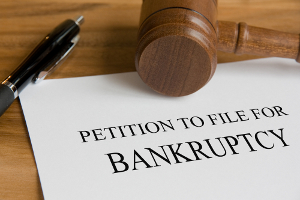 Filing for bankruptcy relief puts an automatic stay into effect. This stay prevents collection activity against the debtor. How long the stay continues in effect depends on the type of bankruptcy case filed. There are two common types of consumer bankruptcy cases. In Chapter 7 cases the stay continues until the debtor receives a discharge, the case is dismissed, or the court lifts the stay after a motion by the creditor. The discharge occurs about four months after the case is filed. Once the judge signs the discharge order, most debts are eliminated, so even though the stay lifts the debtor is permanently shielded from liability for debts discharged in the bankruptcy case, which means they cannot be sued for collection of the discharged debt.
Filing for bankruptcy relief puts an automatic stay into effect. This stay prevents collection activity against the debtor. How long the stay continues in effect depends on the type of bankruptcy case filed. There are two common types of consumer bankruptcy cases. In Chapter 7 cases the stay continues until the debtor receives a discharge, the case is dismissed, or the court lifts the stay after a motion by the creditor. The discharge occurs about four months after the case is filed. Once the judge signs the discharge order, most debts are eliminated, so even though the stay lifts the debtor is permanently shielded from liability for debts discharged in the bankruptcy case, which means they cannot be sued for collection of the discharged debt.
Chapter 13 bankruptcy cases last three to five years. During the pendency of the bankruptcy case an automatic stay is in effect that prevents collection of the debt. This means that if a lawsuit was filed before the bankruptcy case was filed, then it will stop after the bankruptcy case begins. Debt collectors will generally nonsuit the lawsuit once the bankruptcy case is filed. Nonsuiting basically ends the lawsuit. However, if the bankruptcy case ends before discharge, the plaintiff will be able to file a new lawsuit. In addition, filing bankruptcy tolls the statute of limitations, which means that the debtor may not be able to use the limitations period as a defense to the lawsuit.
In some instances the bankruptcy court may allow a lawsuit to continue even though the stay is in effect. The most common reason for allowing litigation to continue is when the plaintiff asks permission from the bankruptcy court to continue litigation in order to collect from insurance proceeds. If the judgment resulting from a lawsuit will not be collected from the debtor then bankruptcy courts will often allow the lawsuit to continue in order to determine liability.